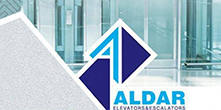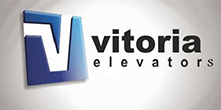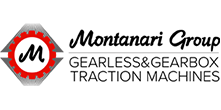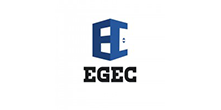Types of elevator
There are many types of elevators, and they can be classified based on a variety of factors such as intended use, capacity, speed, and technology used. Here are some common types of elevator:
1. Passenger elevator: This is the most common type and is used to transport people inside buildings. It features a compartment and doors that can be opened and is often equipped with a button to choose the floor to be accessed .
2. Cargo elevator: This type of elevator is designed to transport goods and heavy loads. It is commonly used in factories, warehouses and industrial buildings.
3. Escalators: Also known as horizontally moving elevators, it is used in airports, malls and train stations to transport people on inclined or horizontal tracks.
4. Escalator elevator: This type of elevator moves frequently between different roles and is used in commercial facilities such as malls and restaurants.
5. Hydraulic elevator: This type of elevator works using fluid and hydraulic pressure to lift the cabin. It is commonly used in buildings with low to medium heights .
6. Traction elevator (gears and ropes : ): This type is based on an electric motor that pulls an elevator through ropes or gears. It is considered one of the most common types of elevator and can be designed to accommodate a variety of weights and speeds. .
Elevator requirements and types vary according to needs and environments, and technological advances continue to improve the safety and efficiency of elevators and provide more comfortable transportation in many buildings around the world..
Ingredients of the elevator
The elevator is a complex system consisting of many components that work together to ensure safe and efficient movement between different floors in buildings. Here is a list of the main components of the elevator:
1. The elevator itself (cabin):: This is where people or goods enter and move between floors. Features doors that open and close to access the cabin .
2. Exterior door (outer door of the building):: There is usually an external door controlled by the operator to open and close to allow the elevator to enter.
3. Interior doors (cabin doors):: These are the doors that separate the cabin and the links leading to the different floors. Interior doors ensure operator safety on the go .
4. Control and operation system: This component includes many devices and systems that manage the operation and movement of the elevator, including the controller, electrical control unit and control panel.
5. Engine: The motor is an essential component for raising and lowering the cabin. The motor can be electric or hydraulic, depending on the type of elevator.
6. Ropes or cables: The engine is connected to the cabin through a rope or cable. These objects push or pull the cabin up or down when the elevator is running.
7. Traction (gears and pulleys: Traction guides the movement of ropes or cables and allows for a safe transition of the cabin.
8. Brake system: The brake system includes several parts that ensure the safety of the elevator. If the system malfunctions, the brakes can prevent the elevator from falling.
These are the main components of the anesthetic. These components can be customized and adapted based on building needs and elevator usage.
Advanced techniques in the elevator
Elevator technologies have advanced dramatically over time, relying on technological improvements to provide safer and more efficient systems. Here are some advanced techniques in the field of elevator:
1. Smart Elevators: These are devices that rely on artificial intelligence technology to improve their performance and efficiency.: Intelligent control systems are used to adjust elevator speed, boarding and descent schedules based on needs and instant updates.
2. Destination Dispatch technologies: This technology uses intelligent systems that direct passengers to the appropriate elevator based on the floor they wish to reach. This increases transport efficiency and reduces waiting time.
3. High-Speed Elevators: This advanced technology uses more powerful and efficient motors to increase elevator speed.: Fast elevators make the transition between roles faster and more efficient.
4. Maglev Elevators technology: This technology uses magnetic motors to push the elevator instead of cables or ropes. This technology: provides a quieter and smoother experience and reduces elevator vibration .
5. Renewable energy elevators: Some women make use of renewable energy sources such as solar or wind to provide the electricity needed to operate them. This reduces their impact on the environment.
6. Advanced lighting and communication systems: Advanced elevators include energy-efficient LED lighting systems and advanced communication systems that allow operators to easily contact the security or emergency office.
These advanced technologies make elevators safer and more efficient, help meet the needs of modern buildings and increase the speed of mobility in high places.
Photos of Elevator
Elevator images are an essential part of the facades of modern buildings. These images are an important detail that contributes to the aesthetics of architectural design and reflects the technological development in the field of vertical transport.
When looking at the photos of Anassir, you can notice the diversity of designs and patterns that suit different types of buildings. These images can show innovative designs of elevator cabins, stunning lighting systems and glass used on the exterior sides of the elevator, giving a modern and attractive touch..
Photos of Asansir sometimes highlight luxury and elegance, whether through the use of high-quality glass and materials or through luxurious interior decorations and designs. They also reflect technological advances through digital screens or smart lighting systems integrated into modern elevators..
In addition to the aesthetic of design, Elevator's images are also a way to illustrate technical innovations such as intelligent control system, advanced security and built-in connectivity systems that make the elevator passenger experience safer and more comfortable..
In short, the photos of the elevator reflect the modern development and innovative technology and highlight the role of the elevator as one of the elements of decoration and design in modern buildings.
In the elevator
Asansir, sometimes known as an elevator, is an essential and important part of many modern buildings. It is a vertical means of transportation that facilitates the movement of people and goods between different roles easily and comfortably. An elevator usually consists of a compartment that people or goods can enter, and a system that raises and lowers the cabin safely and smoothly..
Asnaseer is characterized by a variety of designs and sizes to suit different needs. The cabin of the elevator can range from small to accommodate a few people to large suitable for transporting many people or goods. It is characterized by its different types such as passenger elevators, cargo elevators, and escalator elevators that work horizontally, which make them suitable for multiple uses.
Over the decades, Elevator technologies have undergone tremendous development, making them safer and more effective. Modern devices feature intelligent control systems, safety sensors, emergency communication systems, and advanced brake systems. Elevators are an essential part of modern urban infrastructure, facilitating mobility and saving time and effort for individuals in tall buildings..
How much is the home elevator
The price of a home elevator can vary significantly based on many factors. Among these factors:
1. Type and size: The price of the elevator depends on its type (such as passenger or cargo elevator) and its size. Larger and more complex elevators are often more expensive.
2. Design and customization: If you are looking for a custom design or the cabin is made of luxury materials, you will have an additional cost.
3. Height and number of floors: The number of floors and the total height of the building can affect the cost. The more floors and height, the greater the cost.
4. Asoneur technology: Modern elevators use advanced technology such as intelligent control and advanced security, this can increase the cost.
5. Supplier or manufacturer: Manufacturers vary in their offer of hooks at different prices. You may find price differences based on the manufacturer and its products.
6. Installation and maintenance: The cost of installation and regular maintenance of the elevator must also be taken into account.
In general, the cost of a home elevator can range from several thousand to several tens of thousands of dollars or more, depending on the factors mentioned above. It is always preferable to consult with companies specialized in the design and installation of elevators to get an accurate estimate of the cost of the elevator project that meets the needs of your home specifically


















